Ferruginous Hawks are our largest and most powerful buteo but they’re also secretive, wary of humans and often roost on the ground so they can be difficult to locate. Over the last couple of months I’ve made two extended trips to extreme northern Utah looking for them and had some success but they were hunting from power poles which makes photography difficult.
1/2500, f/7.1, ISO 640, 500 f/4, not baited or set up
This species hunts most successfully from the ground but many of the birds in this area were perch hunting from poles (although there may have been many on the ground that I couldn’t see).
Raptors often rest with one leg extended out in front of them but this bird pointed its leg straight down for some time – a posture that I hadn’t noticed before.
1/2000, f/8, ISO 640, 500 f/4, 1.4 tc, not baited or set up
The perch-hunting strategy seemed to be an effective one – this dark morph is feeding on a ground squirrel.
1/2500, f/6.3, ISO 400, 500 f/4, not baited or set up
Photography was difficult because of the poles and wires. My best chance was take-off shots but even then there were usually wires in the images. I’ve removed wires in each of these last three images – something I don’t like to do but in this case I’ve done it anyway…
1/3200, f/6.3, ISO 400, 500 f/4, not baited or set up
Another issue with this type of shooting is the fact that the birds usually take off at an angle that puts them slightly past me by the time they clear the poles.
1/2500, f/6.3, ISO 400, 500 f/4, not baited or set up
But occasionally you can get a very dynamic take-off posture because of the poles and wires. This bird had to make extra effort in order to clear a wire that was directly beneath it.
This large species is well-known for its “robust chest” which is quite evident in this image.
Ron


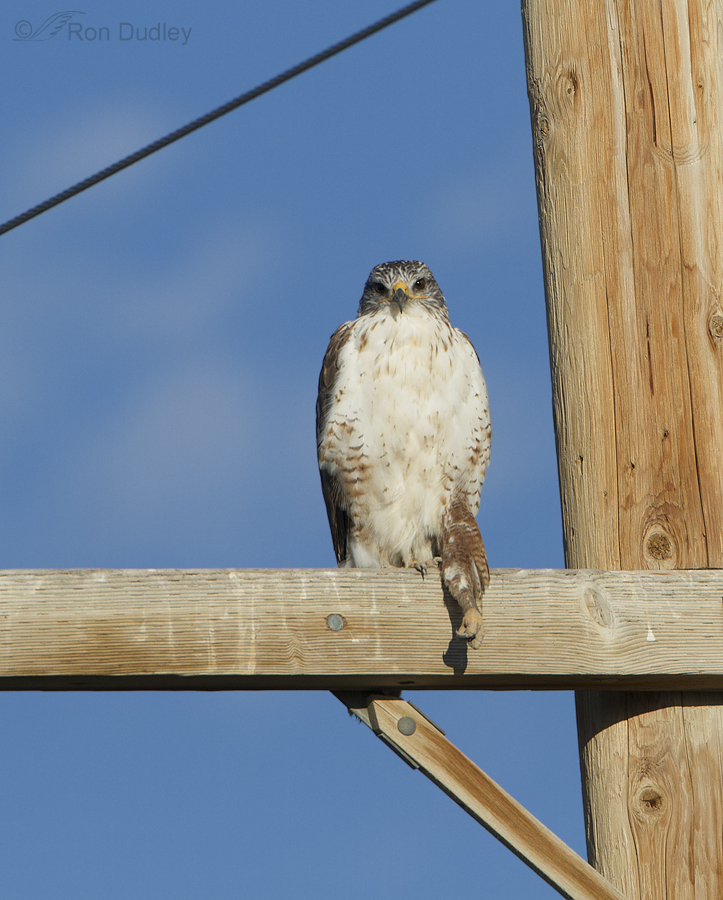
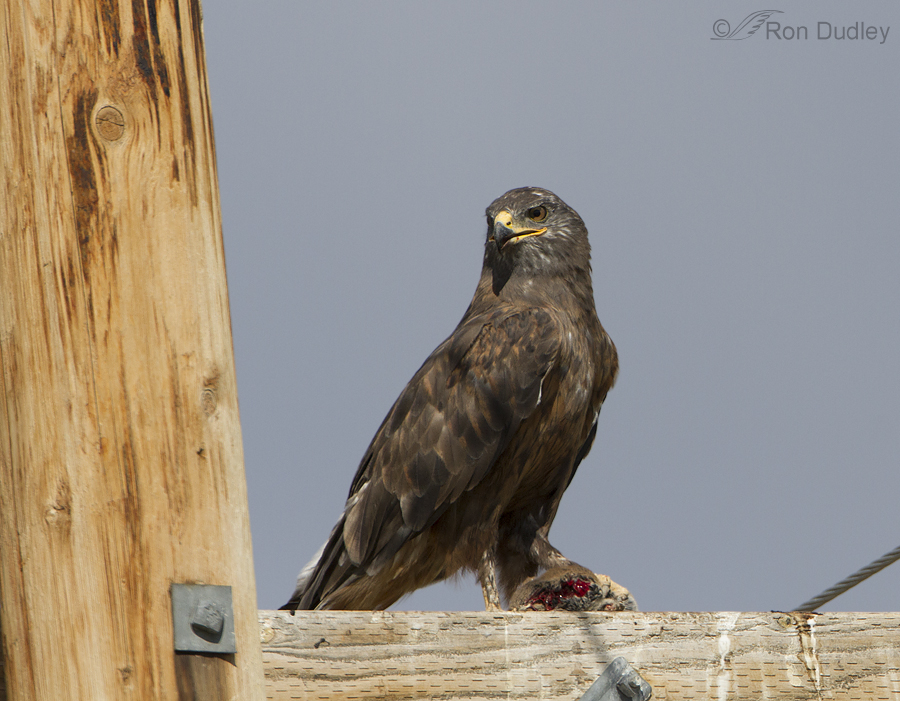
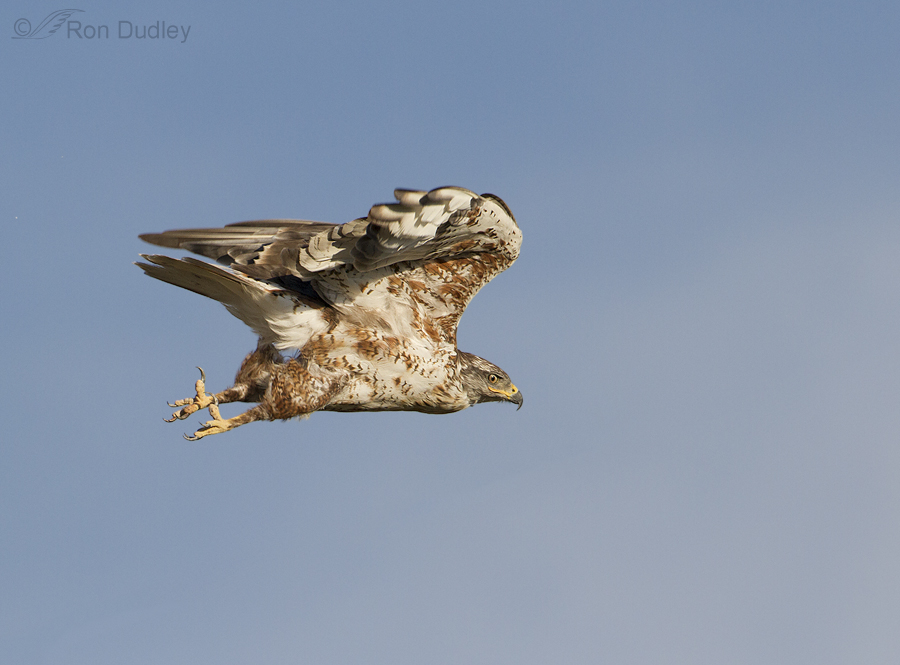
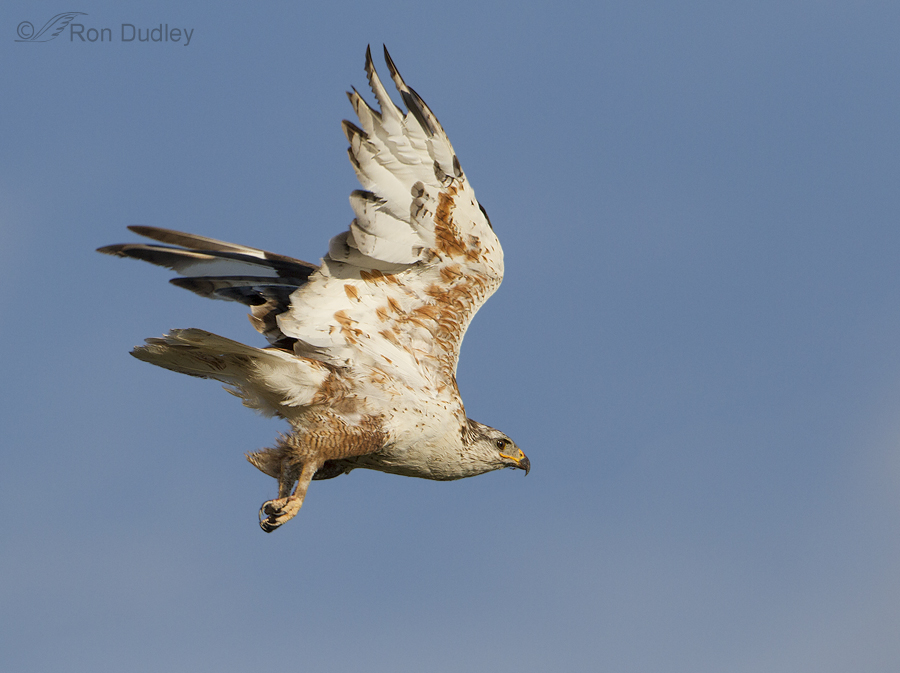
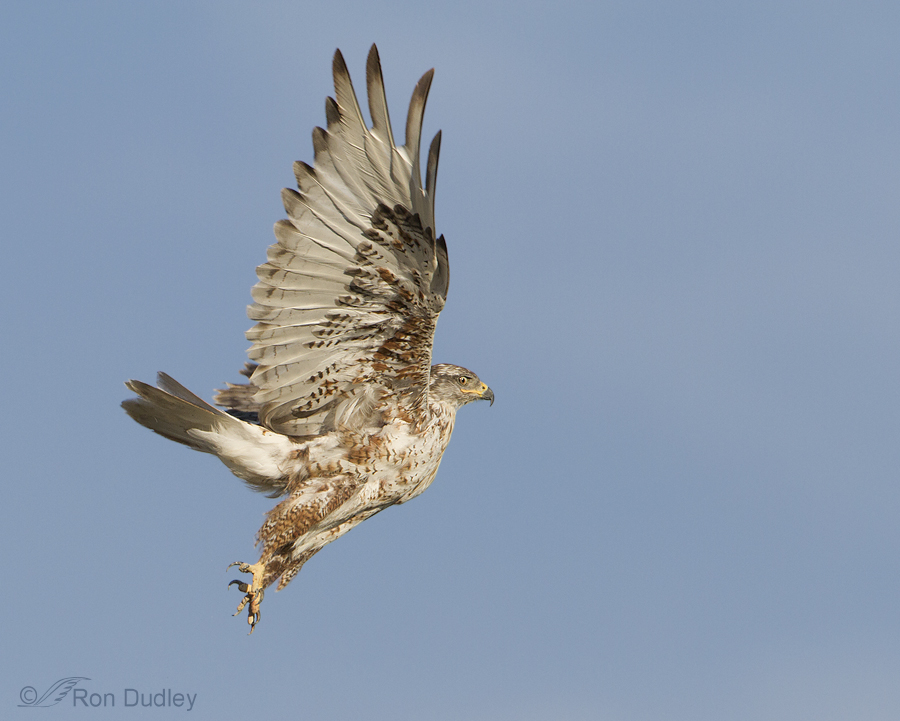
I went back to look at your recent photos of other buteos. The beak in the ferruginous hawk photos look much larger in proportion to the head than the red tail and rough legged. The rough legged beak looks smaller than the red tail. I never noticed these subtle buteo beak to head proportion differences before. Thanks for encouraging folks to think about these photos.
Beautiful photos.
What amazing postures. I enjoyed these without the wires-these hawks are so focused!
Regardless of the name or the categorisation, these are stunning birds. Buteo/Eagle/Glory of the skies…
It’s probably an occupational hazard, but to me the foot the FEHA in the first photo is extending looks swollen. They do suffer prey bites from time to time, which can get badly infected.
Hmmmm, I hadn’t thought about that possibility, Louise. You may be right, though the bird didn’t seem to favor that foot when it was standing normally.
Good to know,Ron. Thx.
Sensational shots Ron! Thanks for sharing! It’s also comforting to know that you have some of the same problems that us “duffers” have. :>)
Charlotte
Charlotte, Some problems are universal to all bird photographers and I certainly have my fair share.
Gorgeous … Ron one of the things that I really find satisfying about your images is your consistent attention to the capture of the eyes of your birdies. Always bright, always crystal clear, always so vivid.
Thanks for noticing, Lois. The eyes can often make or break an image.
Great shots…last particularly interesting…looks like he had to leap up to take off cleanly…and clear the wires. I wonder how close their DNA matches that of a Golden Eagle’s…
“I wonder how close their DNA matches that of a Golden Eagle’s…”
Patty, I found this on avianweb.com
“There has recently been an opinion that because of DNA studies the Ferruginous Hawk should be reclassified as an eagle.”
Your photo’s are amazing, I am so glad your blogg was recommended to me! Thanks!!
Welcome, Mary Jane. I hope you drop by occasionally and find more posts that you like.
Just incredible Ron. Every shot astounds me!!! I occasionally see a Coopers Hawk here in Lancaster, PA. Nothing like what you encounter. So great!!!
Thank you, Ellen.
Wow, beautiful species of hawk that I don’t get to see in my area of the country. I feel the same as you do about cloning out unwanted/distracting elements of a photo but this was one of those justifiable occasions.Great job!
Thanks, Tim – that makes me feel a little better.
Wow! Magnificent images of a magnificent hawk. I’m really glad that you removed the wires even though you are loathe to do so.
Sharon, I always feel guilty when I clone but disclosing that I’ve done it helps a little…
Thank you for the different examples Ron ! The dark morph one looks very close to an Golden Eagle
“The dark morph one looks very close to an Golden Eagle”
An interesting observation, John.
Here’s what BNA has to say on the subject:
“One who knows it (Ferruginous Hawk) in life cannot help being impressed with its close relationship to the Golden Eagle (Aquila chrysaetos), which is not much more than a glorified buteo. Both species have feathered tarsi, both build huge nests on cliffs and in trees, and both lay eggs that are very similar except in size; food habits, flight, behavior, and voice of the two are much alike.”
Stunning!!!
Thank you, Leslie.